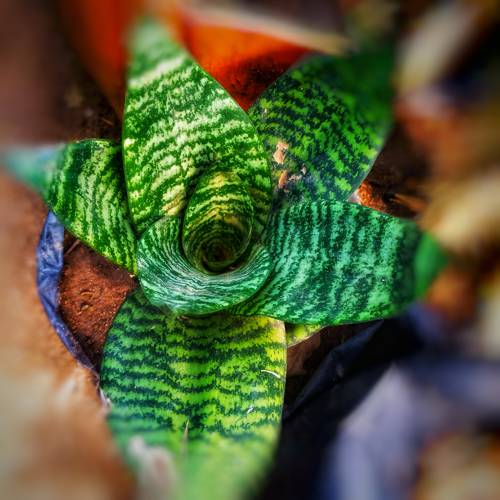
FAQ About How to Revive a Neglected Houseplant

What are the first steps to take when trying to revive a neglected houseplant?
Start by assessing the plant's overall condition. Check the leaves, stem, and soil to understand the extent of damage. Remove any dead or heavily damaged leaves and stems. Clean the plant by gently wiping the leaves with a damp cloth to remove dust and debris. Next, inspect the soil for dryness or mold, which will inform your hydration strategy.

How do I determine if a neglected houseplant needs water?
To determine if a plant needs water, check the soil moisture by sticking a finger about an inch deep into the soil. If it feels dry, the plant needs watering. You can also use a moisture meter for a more accurate assessment. Be cautious not to overwater, as this can lead to root rot, especially if the plant is in a weakened state.

What is the best way to water a neglected plant?
Water the plant thoroughly until water drains from the bottom of the pot, ensuring it reaches the roots. Allow the excess water to drain completely, and never let the plant sit in standing water. For heavily dried-out soil, consider bottom watering by placing the pot in a shallow tray of water, allowing it to absorb moisture from the bottom up.

How can I improve the soil of a neglected houseplant?
Improving the soil can be essential for a plant's recovery. Start by gently aerating the soil with a fork to improve air circulation to the roots. If the soil is compacted, consider repotting with fresh, high-quality potting mix. Add organic matter or perlite to enhance drainage and nutrition.

Should I trim the leaves of a neglected plant?
Yes, it’s often beneficial to trim dead or yellowing leaves, as they no longer serve the plant and can harbor pests or diseases. Use clean, sharp scissors or pruning shears to make precise cuts at the base of the leaf or stem. Avoid removing more than a third of the plant's foliage to prevent stress.

What are signs that a houseplant is beyond recovery?
Signs that a plant may be beyond recovery include a mushy or rotten stem, a completely dried-out root system, and no signs of new growth after weeks of care. If a plant has these symptoms and efforts to revive it show no improvement, it may be time to consider replacing it.

How do I know if my neglected plant needs fertilizer?
A neglected plant may benefit from additional nutrients, but avoid fertilizing immediately, as this may cause further stress. Once new growth appears and the plant begins to stabilize, you can start with a diluted, balanced liquid fertilizer to support healthy regrowth.

What type of light conditions should I provide for a recovering plant?
Provide bright, indirect light for most houseplants, as this promotes recovery without causing additional stress. Avoid placing the plant in direct sunlight, which can scorch the leaves. If natural light is insufficient, consider using grow lights to help the plant regain strength.

Is it necessary to repot a neglected plant?
Repotting may be beneficial if the current soil is poor, compacted, or if the plant is root-bound. Choose a pot slightly larger than the current one and use fresh potting soil to ensure the plant has room to grow and access to necessary nutrients. Be gentle with the roots during this process.

How long does it typically take for a neglected plant to recover?
The recovery time varies depending on the plant species, extent of neglect, and care provided. Some plants may show signs of recovery within a few weeks, while others may take several months. Patience and consistent care are key to bringing a neglected plant back to health.

What are common mistakes to avoid when reviving a plant?
Common mistakes include overwatering, which can lead to root rot, and fertilizing too soon, which can stress an already weakened plant. It's also crucial to avoid excessive pruning and not changing light conditions too abruptly. Providing a stable, nurturing environment is essential for recovery.

Can I prune the roots of a neglected houseplant?
Pruning the roots can be beneficial if the plant is significantly root-bound or if there are dead and rotting roots visible. Use clean scissors to trim away these sections, being careful not to remove more than one-third of the root mass at a time. This encourages new growth while allowing the plant to absorb nutrients more effectively.

Should I mist the leaves of a neglected plant?
Misting can help increase humidity around tropical plants, which might be beneficial for recovery. Use a fine mist sprayer and avoid waterlogging the leaves, especially in cool or low-light conditions, to prevent fungal diseases. Be sure to check your specific plant type for its humidity requirements before misting.

Is it helpful to move a neglected plant outdoors?
Moving a plant outdoors can be helpful if the outdoor conditions align with the plant’s needs (e.g., temperature, humidity, and light). However, this should be done gradually to acclimate the plant to different light conditions. Ensure temperatures are mild and that the plant is placed in a sheltered spot from harsh sun or wind.

How often should I water a recovering plant?
Watering frequency depends on the plant species, size, and environmental conditions. Generally, wait until the top inch of soil dries out before watering again. Be vigilant about any changes in the plant's environment or appearance that might signal a need for adjusted watering routines.

What should I do if my plant's leaves have spots or discoloration?
Spots or discoloration can indicate pests, diseases, or deficiencies. Carefully inspect the plant for pests like aphids or spider mites and treat with natural insecticides if necessary. Discoloration might also suggest nutrient deficiencies, so ensure the plant receives adequate nutrition without over-fertilizing.

Can aerating the soil help a neglected plant?
Yes, gently aerating the soil can help improve air circulation to the roots and break up any compacted soil, promoting better water absorption and root growth. Use a small tool, like a fork, to lightly poke into the soil, being cautious not to damage the roots.

What temperature is ideal for reviving neglected houseplants?
Most houseplants thrive at temperatures between 60-75°F (15-24°C). Avoid exposing the plants to cold drafts or excessive heat. Maintaining a consistent, moderate temperature helps stress recovery and encourages healthy growth.

Can using a grow light aid in the recovery of a neglected houseplant?
Yes, a grow light can be particularly helpful if natural lighting conditions are inadequate. Choose a grow light that provides the appropriate spectrum for the plant type and use it to supplement the current light conditions. This controlled lighting can boost recovery and promote healthy growth.

What role does humidity play in reviving houseplants?
Humidity can significantly affect the recovery of tropical or humidity-loving houseplants. Low humidity can lead to leaf browning and stress. You can increase humidity by using a humidifier or placing a water tray near the plant. However, ensure the environment doesn’t become overly damp, which could encourage mold or mildew.
